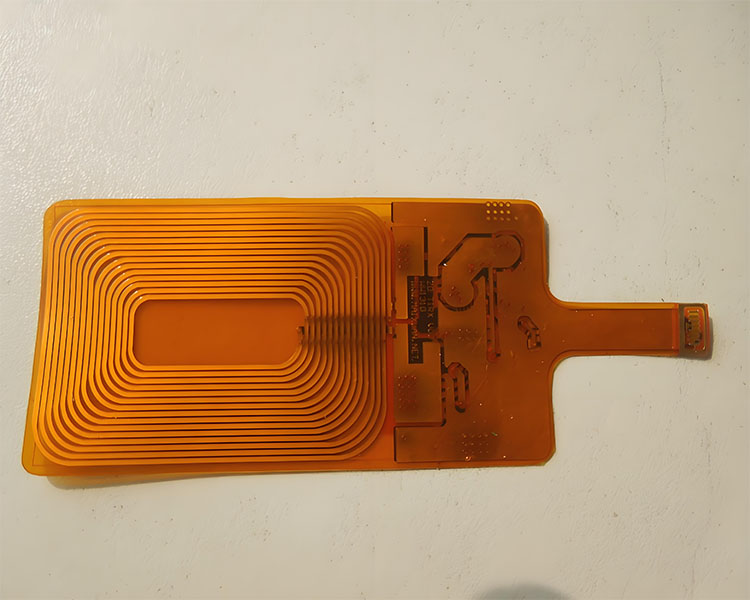The Future Outlook for Double-Sided Flexible PCBs in 2024
Introduction
Double-sided flexible PCBs are pivotal components in electronic packaging and connectivity, renowned for their lightweight, bendable properties. These attributes make them indispensable in smartphones, wearable devices, medical instruments, and more. The technology behind double-sided FPCs is now mature, achieving breakthroughs in wiring density and precision, and utilizing high heat-resistant and flexible materials to enhance reliability and lifespan. As electronics continue to trend towards miniaturization and integration, double-sided FPCs focus increasingly on optimizing three-dimensional space layouts to meet complex structural requirements. The Future Outlook for Double-Sided Flexible PCBs in 2024 highlights the vast market potential and opportunities for technological innovation.

Technological Advancements
Double-sided FPCs have seen significant technological advancements, particularly in terms of increased wiring density and refined precision. The adoption of highly heat-resistant and flexible materials has notably improved the reliability and durability of these circuits. Additionally, the focus on optimizing three-dimensional space layouts is crucial for meeting the demands of increasingly complex electronic structures.
Emerging Trends and Applications
Future trends in double-sided FPCs will emphasize technological innovation and expanded applications. The development of 5G communication and Internet of Things (IoT) technologies will necessitate double-sided FPCs that integrate more functions, such as embedded components and antennas, to support high-speed transmission and high-frequency applications. Environmentally friendly, high-temperature resistant substrates, and stretchable, self-healing materials will drive performance leaps in FPCs. To cater to emerging markets like smart wearables and foldable devices, double-sided FPCs will evolve towards thinner profiles, higher fold endurance, and greater adaptability to complex shapes. The integration of smart manufacturing and automation technologies will enhance production efficiency, reduce costs, and accelerate FPC adoption in new fields.
Forecasting the Future of Double-Sided FPCs
Forecasting the future of double-sided FPCs involves gathering comprehensive information and data, using scientific forecasting techniques and methods to analyze and predict market trends, and understanding the supply-demand dynamics. This process aids in making informed business decisions by reducing uncertainty and risk.
Key Steps in Market Forecasting
1. Defining Objectives
Clearly define the purpose of the forecasting effort. This initial step involves identifying issues within the FPC industry, setting forecast projects, planning, budgeting, and organizing resources to ensure the forecasting process is systematic and effective.
2. Data Collection
Collecting ample data is crucial for reliable market forecasting. This involves gathering information under the guidance of a structured plan to support analysis and judgment.
3. Method Selection
Choose appropriate forecasting methods based on the objectives and conditions. Sometimes, multiple methods may be used to predict the same target. The accuracy and reliability of the forecast depend significantly on the chosen methods. The core of forecasting is building models that describe the characteristics and trends of the study object.
4. Analysis and Adjustment
Comprehensive analysis and judgment of collected data help elevate intuitive understanding to rational insight, revealing the underlying trends and dynamics of the FPC market. Adjustments may be necessary based on new information to refine the initial forecast.
5. Report Compilation
The forecasting report should summarize the main activities, including objectives, analysis conclusions, key data, chosen methods, model construction, and evaluation of forecast conclusions.

Essential Elements of Market Forecasting
1. Information
Information reflects the characteristics and changes of objective phenomena and is the main focus, foundation, and output of FPC forecasting work.
2. Methods
Forecasting methods encompass various techniques for qualitative and quantitative analysis. Methods vary by the nature of the forecast, time frame, and specific techniques, such as model-based or non-model-based predictions.
3. Analysis
Analytical work involves evaluating whether forecast results align with economic theories and statistical conditions and assessing the precision and reliability of the predictions.
4. Judgment
Following a structured procedure ensures organized, planned, and coordinated forecasting activities.
Predominant Forecasting Methods
1. Time Series Analysis
This method involves predicting future values based on historical data arranged chronologically, such as annual sales or supply quantities.
2. Regression Analysis
Regression analysis studies the dependency relationships between a dependent variable and one or more independent variables. It involves building and testing regression models to forecast outcomes.
3. Qualitative and Quantitative Methods
– Qualitative Methods: These include intuitive judgment methods like expert panels, Delphi method, and customer surveys, often used when comprehensive statistical data is unavailable.
– Quantitative Methods: These rely on historical data and mathematical models to predict future market demand, classified into time series models and causal relationship models.

Conclusion
As competition intensifies in the double-sided FPC industry, companies are increasingly focusing on market analysis and research to gain a competitive edge. Comprehensive information processing techniques allow for the collection, organization, and analysis of vast amounts of market data, providing valuable insights for strategic decision-making. This approach helps reduce investment risks, manage costs, seize opportunities, and enhance competitiveness in the evolving FPC market.







Leave A Comment